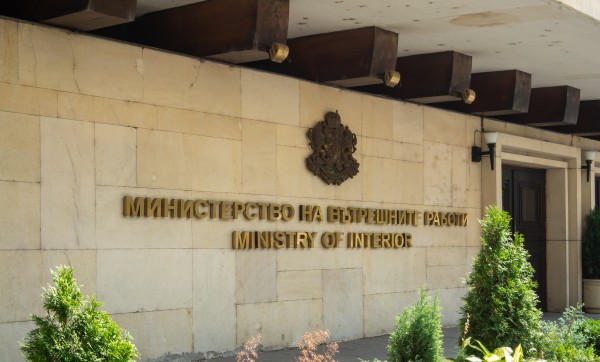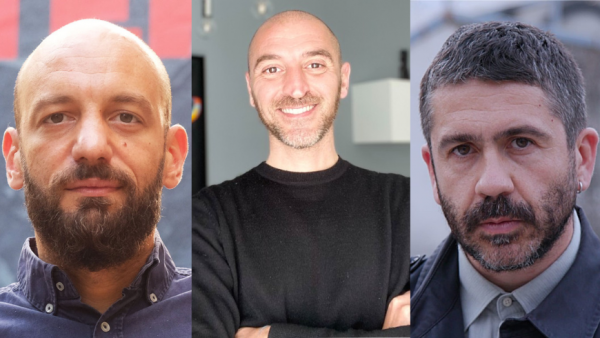Philanthropy alone can’t save the free press, but it can unlock and catalyse other forms of support that are critical to the sustainability of independent media, from taxpayer funding to impact investment.
That was the message from experts at a recent roundtable discussion held at the IPI World Congress in September 2021 on the changing role of philanthropic institutions that support journalism, especially in countries where independent media is under attack.
See also Ten takeaways for funders of independent media
A lot of top minds in the room thinking about business models for high-integrity independent journalism and how philanthropy can help develop and support them. #IPIWoCo @erstefoundation pic.twitter.com/cjLgl2dt5E
— IPI-The Global Network for Independent Journalism (@globalfreemedia) September 16, 2021
“Media freedom is intrinsic to sustainability and viability, and sustainability and viability are intrinsic to media freedom,” media consultant Sameer Padania told the gathering of donors, journalists and media development specialists at IPI’s 2021 World Congress in Vienna.
Padania is the lead author of A New Deal for Journalism, a report by the Forum on Information and Democracy that calls for countries to commit 0.1 percent of annual gross domestic product to fund independent journalism. It also urges greater collaboration between governments and those on the frontlines of media sustainability.
“There hasn’t been a strategic, sustained, scaled-up, properly supported and structural approach from the funding sector, and that includes investors as well as philanthropies as well as governments and so on,” Padania said.
“All of these things need to be more joined-up, and they need to happen for a decade, from tax to direct funding to supporting and underwriting investments etcetera.”
Reality check
Marius Dragomir, director of the Center for Media, Data and Society at Central European University (CEU) in Vienna, defined sustainability as “when you generate funding through your own services and demand for your own services”. But he said that was easier said than done.
Citing a CEU study of 320 media outlets in 80 countries that all survived thanks to philanthropic support, Dragomir lamented that only eight had succeeded in becoming “sustainable”.
Some journalists at the roundtable described the quest for commercial viability as a pipedream in countries where autocratic regimes use state resources to manipulate the media market against independent journalism.
“I have to say that for organisations that are working in an environment such as I am in Serbia, international funding is extremely important,” Dragana Zarkovic Obradovic, director of the Serbia branch of the Balkan Investigative Reporting Network (BIRN), said.
“At the moment, for us, any talk about sustainability is not realistic.”
Claudia Ciobanu, Warsaw correspondent for BIRN’s Reporting Democracy news service, described Poland’s media scene as thoroughly “captured”, with state media functioning as a government propaganda machine and independent media starved of advertising from state companies.
Meanwhile, she noted a rise in the use of vexatious litigation to silence independent journalism in countries such as Poland and Hungary.
Ciobanu called for more legal assistance to help journalists fend off SLAPPs, an acronym standing for Strategic Lawsuits Against Public Participation. Such suits are baseless yet expensive to defend against.
Khadija Patel, head of programming at the International Fund for Public Interest Media, painted an even bleaker picture outside of Europe.
“As bad as your situations are, the rest of the world is worse,” she said. “In low- and middle-income countries, the potential for sustainability does not exist. It’s not for nothing that we’re talking about a media extinction event.”
The International Fund for Public Interest Media wants wealthy countries to contribute at least one percent of their budgets for overseas development assistance to support independent journalism.
“If we get to that point, we could see billions of dollars being directed to media development,” she said.
Cut to the core
The international community has a €3-5 billion gap to plug in providing basic support to allow local journalism to inch towards sustainability, Mira Milosevic, executive director of the Global Forum for Media Development, said.
“There is a clear need for scalable systems that would provide systemic support to journalism while there is no commercial model to sustain it,” she said.
The key, she added, was for donors to provide “core, institutional support” — for example, to cover rent and salaries — rather than short-term programmatic assistance.
What is sustainable financing for #media ? Probably hybrid models says Mira Milosevic from @MediaGFMD , that include income generation by the media, public and private supports, long-term investors. This is the approach we try with our media @FondHirondelle but there is no magic pic.twitter.com/qvpG9T1ogX
— Caroline Vuillemin (@CaroVuillemin) September 16, 2021
Milosevic also urged donors to reduce the bureaucratic burdens on media organisations receiving grant financing and to help them learn to fundraise for themselves.
Audrius Perkauskas, deputy head of audiovisual and media policy at the European Commission, said a new seven-year programme of support for media under the EU’s Creative Europe scheme offered more stability in terms of funding.
Between 2021 and 2027, Creative Europe will make €2.44 billion available to support the culture, audiovisual and media sectors.
But he conceded that the European Commission was “progressing less” on reducing red tape and abandoning project financing tied to specific results such as producing content or delivering training.
“For the time being, we are not a good source of operational expenditure,” he said.
Reka Kinga Popp, editor-in-chief of the Eurozine magazine and network of cultural journalists, picked up the theme.
“How come the European Commission is redirecting some of its core cultural and media funding from operational grants to project grants in the middle of the crisis of the fricking century?” she said.
“Also, the ratio of funding for wages is always questioned in almost every grant project that anyone ever writes. What am I supposed to pay for? Am I only supposed to pay for reinforced concrete?”
She added that funders should not neglect local media and smaller, niche media outlets that play an important role in channelling journalists, editors and new ideas into the mainstream.
‘Paramedic’ philanthropists
The COVID-19 pandemic amplified the pressures facing independent media organisations — creating an upsurge in demand for philanthropic help.
“We receive around 3,500 applications a year,” Knut Olav Åmas, executive director of the Fritt Ord Foundation, said. “Last year, the corona year, we received 5,500 and spent 50 percent more on grants than in a normal year.”
For Christoph Plate, director of media programmes in sub-Saharan Africa for the Konrad Adenauer Foundation, the coronavirus crisis underlined the importance of not relying on donor dollars.
“Let’s not glorify the impact of philanthropy,” he said. “I think that philanthropists can be paramedics. They can help when we break our leg or when we’ve got a scratch… But I think we need to be looking at the fact that philanthropists will come and go but media wants to stay.”
He added: “The pandemic has shown in Africa that there is a willingness of consumers to pay for verified information.”
#IPIWoCo 2021@ChristophPlate urges media leaders to focus on the core of #journalism and look for alternative sources of income.
“African middle classes are pulling out their credit cards, saying that: ‘We want to invest in quality journalism’.”@kasmedia @kasonline @IPI_WoCo pic.twitter.com/b13QZGvdDx
— KAS Media Africa (@KasMedia) September 16, 2021
‘Change the ecosystem’
Grant-givers should take an “ecosystem approach to philanthropy” while providing core support over the long term to allow media outlets to reach viability, Merel Borger, director of the Limelight Foundation, said.
That is a strategy also adopted by Civitates, which allows foundations to support independent media through a pooled fund.
According to Civitates fund manager Marie-Laure Muchery, the initiative lets donors new to media financing learn from their more seasoned peers. The question, she said, is not only “how can philanthropy help journalism, but also how can philanthropy help philanthropy help journalism?”
Advocating a hybrid model of core funding plus support for business innovation, Ondřej Liška, European director for Porticus, said: “The whole ecosystem has to change.”
“Let’s collaborate more. Let’s think of new ways we can think about and describe the social impact through which independent journalism contributes to safeguarding democracy and make it more visible to governments, make it more visible to funders and make it visible within society as such.”
‘Catalyse the blend’
For Mary Fitzgerald, director of information democracy at Open Society Foundations, the fight for independent media is “asymmetric warfare”.
“No matter how much money we raise in our sector, it will never be what the other side or other sides are equipped with,” she said. “So we have to think more about what else we can bring in.”
She listed impact investors — who seek to generate social value as well as financial returns — and “actors who don’t work in philanthropy, who work in many other fields and businesses” as new players to invite inside the tent.
“Philanthropy can help expand and broaden the type of funders who do come,” agreed Patrice Schneider, chief sustainability officer at the Media Development Investment Fund (MDIF).
MDIF aims to launch a €100 million blended finance investment entity for independent media companies at risk of capture by governments and vested interests in Europe. It has already secured more than a quarter of that sum, Schneider said.
“It’s a new blend,” he added. “We’re bringing new people. We’re bringing the usual suspects, we’re bringing civil society foundations, but we’re also bringing banks, believe it or not … Philanthropy can help catalyse the blend.”
Jointly organised by the International Press Institute and ERSTE Foundation, the roundtable discussion titled Sustainable Financing of Media: How Can Philanthropy Help? was moderated by Marius Dragomir of the CEU Democracy Institute and Maribel Königer, director of communications, media and journalism at ERSTE Foundation.
• Watch a recording of the September 16, 2021 event.
• See Ten takeaways for funders of independent media



